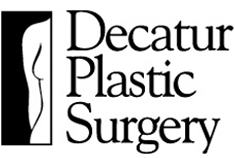
256-340-5188
1206 Somerville Rd
Decatur, AL 35603

256-340-5188
1206 Somerville Rd
Decatur, AL 35603
Overview
Breast Implant-Associated Anaplastic Large Cell Lymphoma or BIA-ALCL is a lymphoma cancer of the capsule, your body's biological container around your implant. Therefore, it is not a cancer of the breast tissue itself. It has become better understood over the past 10 years as more cases of this cancer have been identified and studied. In the past 5 years, serious concerns about the causes and risks have become more clearly communicated. But it is still a new disease, and the entire plastic surgery surgical community and the implant manufacturers are trying to figure out the relationship to implants and formulate the best recommendations for patients with breast implants.
FDA
The recent analysis of information from known cases leads to textured surface implants being the main risk factor. Therefore, as a precaution and in agreement with the FDA, in July 2019, manufacturers of implants asked surgeons worldwide to stop inserting implants with textured surfaces and recalled all devices on the shelves in hospitals and doctors' offices. The exact mechanism for textured surfaces causing the disease is NOT known at this time. Implants with smooth outer surfaces do not seem to cause the risk of the disease.
At the present time, the FDA's recommendation is that it is NOT necessary for women with textured implants to have them removed or exchanged. For those women, the FDA is only recommending routine self-breast exams and being aware of the possible presenting signs of BIA-ALCL. The presenting signs of BIA-ALCL will usually be breast swelling or fluid collection, causing breast asymmetry (70%). This is the most common presenting sign. Other signs can be rapid firmness, lumps in the breast (20%) or lymph node in the armpit (5%), pain, redness or rash (rare).
Present Data
With the women who have been diagnosed with BIA-ALCL, the average time for the disease to occur is about 10 years from the time of implantation (range 1 to 27 years). Textured implants were in use many years before I started my private practice over 30 years ago. My main implant of choice has been saline-filled implants with a textured surface. I used saline implants because they are safe and textured surface implants because they are thought to decrease the risk of capsular contracture. The relationship of textured surface implants to a new disease is surprising and troubling. As the data accumulated, I decided to stop using textured implants in the Fall of 2018.
Patients need to consider the risks as they are known at the present time. With the data available now, the overall lifetime predicted risk is low but covers a wide range. The estimate is from 1:2,200 to 1:86,000 in women with textured implants. This is based on current confirmed cases and textured implant sales data over the past 20 years. Put this into perspective by considering the breast cancer risk in women is 1:7 to 1:8 women. Your risk of having regular breast cancer is MUCH higher than your risk of having a problem with BIA-ALCL. That is why women of the appropriate age should have annual mammograms to check for signs of regular breast cancer. Mammograms cannot check for BIA-ALCL.
Early diagnosis by recognizing one of the presenting symptoms listed above is important. To repeat, these are breast swelling or fluid collection causing breast asymmetry (70%), lumps in the breast (20%), feeling lymph nodes in the armpit (5%), pain, redness or rash (rare). When found early, the treatment is 100% capsule removal and implant removal and the disease can be cured. Missed disease or neglected disease can become more severe, spread through the body, and at that point would be treated like a lymphoma, requiring chemotherapy and possibly radiation therapy. The procedures to confirm the diagnosis include a special test on the fluid around the implant to look for a marker called CD30 immunohistochemistry. Other lumps, masses or swollen lymph nodes would be surgically biopsied. There is not a simple blood test to screen for the disease. If a positive diagnosis is obtained a referral to an oncologist would be made and a PET-CT scan would be obtained.
Current Status For Patients To Consider
All of my breast implant patients are encouraged to do self-breast exams and be aware of the problem and the risk. You can also follow updates on the American Society of Plastic Surgeons website (the link is below). Call the office if you want to discuss the issues regarding breast implants further.
Although it may seem that changing to a smooth-walled implant would decrease the risk, the risk reduction benefit is unknown and not something that can be calculated. There is also no data presently to support the need to electively do a full capsule removal. Full capsule removal just increases the surgical time and the risk of complications. But it is a patient's decision to consider surgery or not.
At this point, for breast cancer patients with textured implants, insurance companies have been approving and paying for the exchange.
Previous cosmetic augmentation patients will have the fees to redo the breast augmentation since this will not be an insurance covered case.
The American Society of Plastic Surgery has patient information available about this problem and that information can be found at this link. Tap Here
© 2005 - 2020 Gordon M. Telepun, MD
Providing care to patients in Decatur, Huntsville, Madison, Hartselle, Florence, Muscle Shoals
Photographs May Not Be Reproduced, Written Text and Descriptions are Copyrighted and May Not Be Reproduced